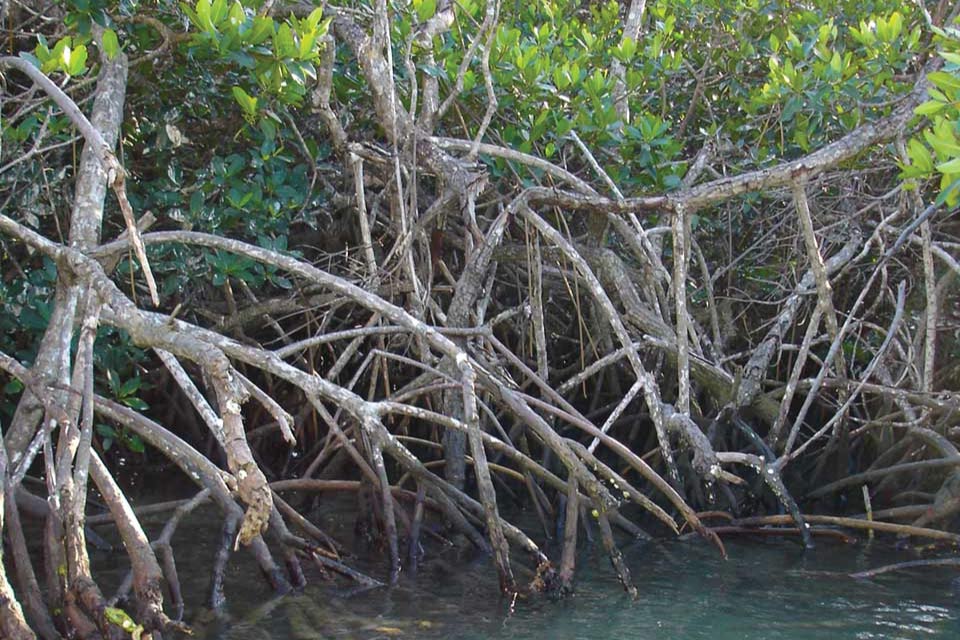What is Blue Carbon?
Blue carbon is the term for carbon captured by the world's ocean and coastal ecosystems.

Yes, this is an image of a mangrove, but did you know it is also an image of a sink? A carbon sink. Don’t know what that is? Read below.
Did you know?
NOAA’s National Estuarine Research Reserves and their partners are working to make wetlands conservation and restoration profitable while lessening greenhouse gas emissions through blue carbon financial markets. These markets balance projects that feature heat-trapping emissions with contributions that take carbon out of the atmosphere. Efforts thus far have produced the first-ever U.S. guide that makes salt marsh restoration eligible for international carbon markets; research that documents carbon storage capabilities in the marsh; workshops and school curricula on the topic; and newsletters and technical assistance.
Something that has a significant effect on our daily lives and is stored within the largest system of water on our planet must be a household name, right? Not necessarily. Have you ever heard of blue carbon? Chances are the answer is no, but perhaps you know more than you realize.
Blue carbon is simply the term for carbon captured by the world's ocean and coastal ecosystems. You have probably heard that human activities emit (or give off) something called carbon dioxide, which contains atmospheric carbon. You have also heard that these gases are changing the world's climate, and not in a good way. What you may not have heard is that our ocean and coasts provide a natural way of reducing the impact of greenhouse gases on our atmosphere, through sequestration (or taking in) of this carbon.
Sea grasses, mangroves, and salt marshes along our coast "capture and hold" carbon, acting as something called a carbon sink. These coastal systems, though much smaller in size than the planet's forests, sequester this carbon at a much faster rate, and can continue to do so for millions of years. Most of the carbon taken up by these ecosystems is stored below ground where we can't see it, but it is still there. The carbon found in coastal soil is often thousands of years old!
The bigger picture of blue carbon is one of coastal habitat conservation. When these systems are damaged, an enormous amount of carbon is emitted back into the atmosphere, where it can then contribute to climate change. So protecting and restoring coastal habitats is a good way to reduce climate change. When we protect the carbon in coastal systems, we protect healthy coastal environments that provide many other benefits to people, such as recreational opportunities, storm protection, and nursery habitat for commercial and recreational fisheries.
One method of slowing climate change impacts is to incorporate coastal wetlands into the carbon market through the buying and selling of carbon offsets. This approach creates a financial incentive for restoration and conservation projects by helping to alleviate federal and state carbon taxes aimed at discouraging the use of fossil fuels. When fewer greenhouse gases are emitted, less pollution is created. When there is less pollution to tax, the process benefits not only the environment but also the financial well-being of the community doing the restoration.
Social